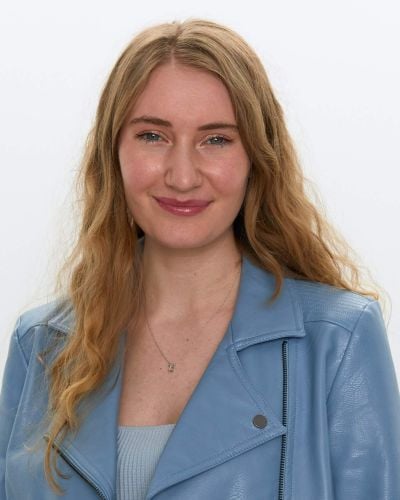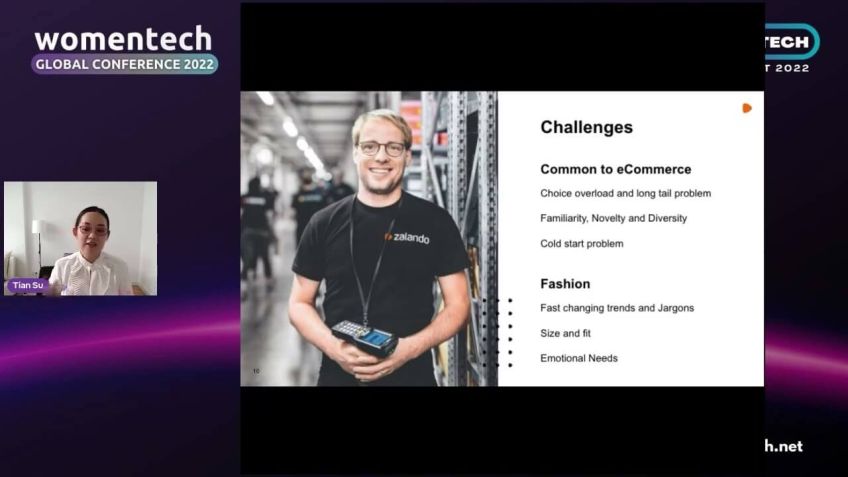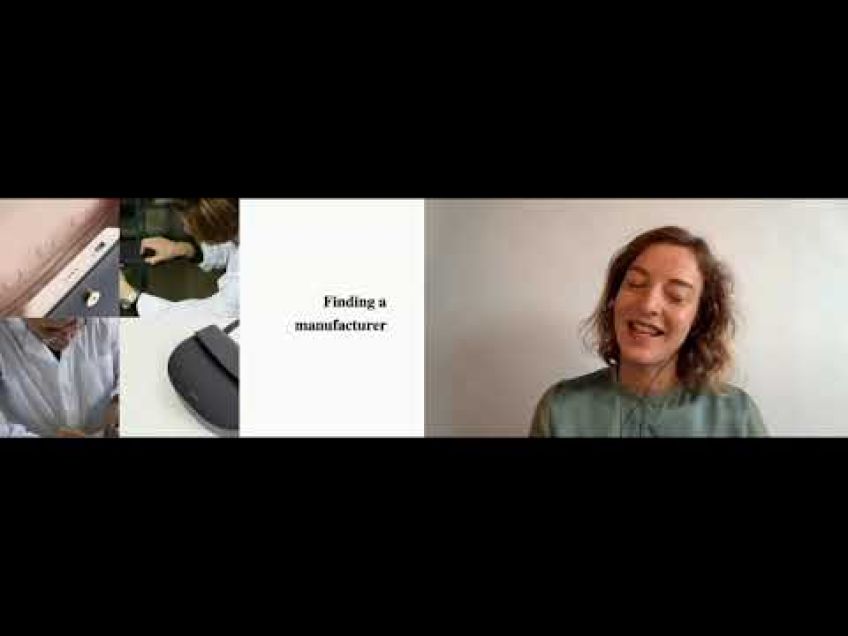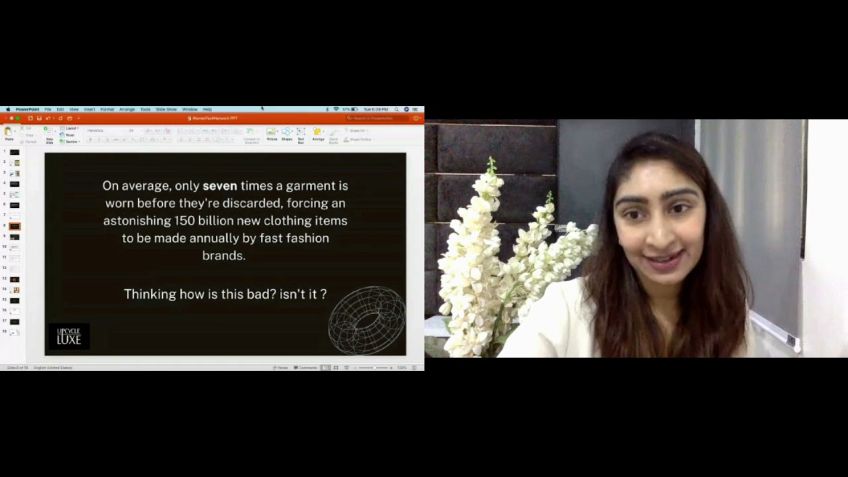Fashion’s Big Opportunity with Technology
Emily Super
Psychologist + Fashion FuturistReviews
Reimagining Sustainability in Fashion through Technology
Avoiding Fashion Waste with Proper Planning
Technology: Presenting Solutions
- Creating fabrics and garments
- Forecasting trends
- Improving fit accuracy
- Making better-informed decisions regarding production (sizes, colors, and quantities)
The Trade-off: Returns
Factors such as consumer behavior and the lack of understanding about the impact exacerbate the issue. Herein lies the need for Reverse Logistics Technology to address this massive problem.
Taking A Proactive Approach
A Bright Future Ahead
Video Transcription
OK. Hello everyone. Uh I know we have such a limited time together here, so I'm just gonna start off really quickly. Um Thank you so much for coming. I hope uh it's been a fun conference thus far. I know it's been a very long day.So it means a lot that you're here. Um So this is uh fashion's biggest opportunity in technology with me, Emily Fortune Super. Uh So we'll just do a quick run through with me and then reimagining sustainability with technology, which is gonna be the core theme here. Uh So this is about fit returns forecasting and then hope to get a bit of a discussion going. So I'll try to kind of wrap up but we only have 10 minutes. So a little bit about me. I started my career as a high fashion model about 12 years ago, was published in major magazines. Wash walked in every major fashion week in the world. And then I turned to academia to learn about the fashion industry through that lens. I received my master's of Applied Psychology of Fashion from London College of Fashion and I worked for Premier Model Management and for the past three years uh I worked for with, yeah. So the main problem that I want to discuss and I want us to tackle today is really about sustainability.
But imagine through the lens of technology um and how this is impacting all of us really in the fashion industry and how we really need to approach it as this colossal opportunity that we can solve with technology. It's not, we shouldn't be afraid of it. We should be more excited about it. I'm very excited that we have the opportunity to solve such a, such a large and colossal problem. Um And really the problem is that we have waste and we're making too much and it's really based on poor planning. And so how can we solve this? So a little bit of history before we dive in, it all started with a little known shoe company uh that started really a revolution a long time ago and they initiated free shipping and free returns and this has now become the industry standard. And sadly, it's affecting all of us because we don't want to lose our consumer base and our happiness levels in our consumers. And, and we want to keep them coming back with free shipping and free returns. We don't want to change that. But unfortunately, even small businesses are tied to this industry standard and they're unable to get ahead really because of this.
Um And it really also forms the decisions that consumers make, if they know that they can just return it, they'll, they'll obviously buy more and try things in comfort of their own home. And that's, that's a huge issue that we'll get into in a little bit. So a, I, I know this is a huge buzzword right now with the resurgence of, uh, chat G BT and everyone's talking about this right now. But what I, why I want to bring it up is because it has a huge opportunity to make such a large impact in fashion and a positive one at that, not a negative one. So as we know, designers use A I to create fabrics and garments, consulting firms use it to protect trends for their manufacturing clients. But really, we can apply A I to fixed fit and to also make better algorithms and better informed decisions on how much we should make in each of those products. What sizes, what color all of that and really it's not being leveraged in this way. So returns are a trillion dollar problem uh globally and 30 to 40% of online purchase clothing is returned. That's the highest percentage of any industry. Typically it grown, it runs anywhere between 5 to 20% in other industries. So this is a huge issue.
There's billions of pounds of returns are thrown away in the US every year. That's, that's a staggering number and 25% of those returns are discarded. The remaining percentage is really based on where it was returned in what condition it was returned and whether it needs to be cleaned, repackaged, you name it and what the, uh, how much work that would take to do that. So, really consumer education is also needed here because a lot of consumers, uh, companies don't want that to come out because it's a bit of a Pandora's Box and it would shape consumer behavior forever if they knew the extreme impact that it took on uh really our planet as, as well as our companies of needing to deal with all of this, this backfill product and this returned product.
Uh but people don't know, they, they like to try things on in their own house. Like I said, and they, they like buy eight different pairs of pants and different sizes and colors because they don't know the fit of, of each of our pants, let's say, and they'll just return it all because it's easier for them. And they've been told it's ok with our free ship, free return policy. So it's really, it's a huge issue. Uh Just some quotes here. I read a really interesting article from the Atlantic. They stated that alarmingly the problem almost never comes up in business education. There's very, very, very little academic work in reverse logistics. Brown said, meanwhile, forward logistics and supply chain is taught in every business school in the country people are taught to. So this is really the term of reverse logistics technology, which is really dealing with all of those returns and what we do with them, does it go to the warehouse? Does it become dead stock? Does it go to liquidation? How do we deal with it? And how can we change that? How can we deal with it in a better way? Uh So this is really just a more um an easier digestible version of uh what it looks like. So we have returns and exchanges, reselling return products, repairs, recycling and disposal and replacements.
So only 23% of companies use some sort of technology or software to better manage returns or use these reverse logistics technology. So again, this is a huge opportunity and it's a good place to start. So where does it all go? So all of this return product that I was saying many retailers end up throwing away over 25% of returns, as previously stated, holistically, that ends up being over £5 billion of goods that end up in landfills a year from returns. That's just a year. So he estimates over the next several years that it could swell up to £10 billion of returns in landfills around the world. So that's a very, again, a huge number that we really need to be taking note of. And I think it's this huge problem that we're all ignoring and because we don't really want to engage with it, but it's something that we need to be forced to engage. And obviously, yes, it may, it may come forward that maybe we need to put these into our reports and that that might push people to make better decisions. But I want us to make decisions before it comes through policy because those will take a long time. This really is something that we, we all are dealing with. So I want, I want it to be solved and really like a manner of, of togetherness if you will. So how much we make coming back to the idea of that we're making too much product.
So one of the biggest impacts of A I and fashion is that in the area of supply chain management. So with A I models capable of being trained by historical inventory levels and sales performance to better predict sales, businesses can make more informed decisions about what to stock.
And when this can help reduce waste, improve customer satisfaction, increase products. I personally think that this is one of the most significant benefits of A I and fashion and it has the potential to streamline the entire supply chain process. So that's huge. That's exactly what we're talking about is that we can make better informed decisions, we can build better algorithms with A I and we need to be leveraging it in this way. So this also means going back to the consumer and reimagining the shopping experience and how can we change consumer behavior for the better. So platforms such as obsess and psych that I list here. Psych is a generative A I platform that better predicts consumer behavior in terms of showing them what we think that they should see. So if they love blue, we're gonna be showing them blue, right on the flash page. Um And obsess really changing the game in the sense of how we consume ecommerce experience. So how do we shop rather than like the endless aisle or the endless scroll and really focused on personalization. I think we need to be building better customer profiles and then having a for you and then for others page and really leveraging the data that we already have and and making those informed decisions around fits and this can all be to decrease returns.
So the future it, I think it looks incredibly bright. I'm really excited about all of this. It's yes, it's, it's huge problems and it's something we need to be focused on, but there's nothing but opportunity here and we're really in a time of all of this technology coming forward. And again, these consumer behaviors being able to be shaped with technology and a clear path and and a way forward that that is possible, which it hasn't been before. And if consumers don't know what bad poor decisions they're making, how can they possibly make better ones. So again, we can make less with better algorithms with the help of A I, we can fit customers better decreasing returns we can deliver as a personalized ecommerce shopping experience and consumer education and impact reports and transparency. I think it really starts with that.
And these are just a few uh generative A I cases that Mackenzie came up with. Um in their predictions of this year, the report came out in on March of, of this year. So again, customizing products for individual consumers at scale uh such as eyeglasses based on facial topography. So interesting, again, based on body shape or color or eye color or hair color, any of those and then tailoring product returns based on individual consumers as well.
So having almost um a list of people that return a lot, a list of return little and then how to how to curb that consumer behavior. It all starts with understanding. Um Yeah, and then marketing is a huge opportunity as well in product development. I just see a quick question in the chat here. So I know that we're tight on time. So I just want to look at that here. Um Yes, exactly. I hope I answered this question but tell me if I didn't. Um So sorry, I should just read the question. So, thanks possession. Are you aware of any technology companies who are in the space solving this problem? Yes. So psych and obsess those are two great platforms as well as um there's another one listed above. I can go back to it where he is running a company solely based on reverse logistics. So, Tuo is their name. So yes, there are some companies out there doing some amazing work and there's so many more and more popping up every day. So. Absolutely. Ok. So we're just over time.





No comments so far – be the first to share your thoughts!